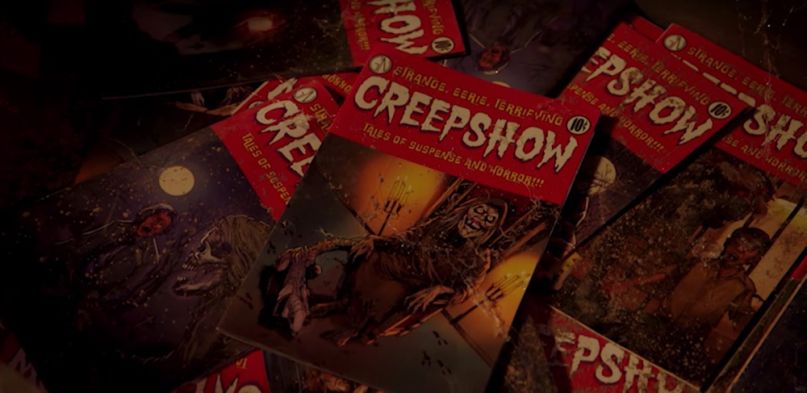Who said horror can’t be fun? Director Rob Schrab relishes in the more enjoyable side of the genre and works hard to incorporate it into his work no matter what. As a boy of the 80’s, his passion for the purest form of horror and bringing the pages of a story to life is incredibly endearing. Watching his attention and hands-on techniques behind the camera on the Creepshow set was an experience I won’t soon forget. I felt like I was lucky just to be there as an observer, but Schrab, being equally as much of a down-to-earth fan, was eager to express appreciation for living the dream himself.
His segment, ‘Bad Wolf Down’ is a bloody good werewolf and Nazi showdown fit for the pages of a comic book medium of any kind. Knowing what makes Creepshow “Creepshow” aids Schrab in creating a story packed with action and effect. Luckily it’s going from an inked page to a gory set with stunning practicals, sharp influence, and one show-stopping villain.
Schrab mentions his segment is like an Avengers-werewolf setup. When it comes to this story, some simple inspiration by some big cinematic names is the perfect way to pay homage to the greats.
He begins, “I had this story brewing in my head for years, even long before Creepshow, and I’ve always had a love for werewolves and war and action and I just wanted to match them up. When I was working with Greg Nicotero and pitching this story I said, ‘Hey we’ve got an opportunity here to not only pay homage to horror and war comics, but also to pay homage to werewolf stories.’ Greg’s a big werewolf fan too.
I wanted to see what would happen if The Wolf Man, Rob Bottin’s The Howling werewolf, and Rick Baker’s An American Werewolf in London werewolf were all in the same story together. When our guys change into werewolves I’m just looking for that comic book splash page and I really got excited when it was possible. As I was writing this script and putting it together I was waiting for the call where Greg or whoever would say we can’t afford it, but Greg just loved the idea and wouldn’t allow us to phone-in the coolest part of this, which is the werewolf. I’m totally in debt to Greg for just having that enthusiasm and the refusal to not do anything half-assed. It’s just great.”
Being on set for all hours of the early afternoon, evening, and the wee hours of the morning, it was obvious to see just how hard it was to pull off one simple decapitation. What are both the difficulties and rewards of working practically for the director?
Schrab reasons, “I only trust what I can see in front of me. When you’re a guest director it’s not easy to say ‘Hey, we’ll do it in post.’ I’m usually not around. I have two days to edit and then I hand it off, whether or not my edit stays is up to the producers and I’m not there to oversee a cut or an effect or something that’s done in post unless I’m producing the show too. I tend to do things practically because I like working with my hands. I build stuff, I do a lot of DIY things on my own like shorts. I’m working with Greg, so why wouldn’t I do most all practical stuff? These guys know how to do this. It’s just when you’re working at such a low budget you don’t have the manpower to have things prepped and ready to go. You have two guys that have to set it up and it takes a while to do that. If this was something like The Walking Dead things would move a lot faster. When it comes to things like the head getting knocked off, I was surprised too. Sure, it took a while, but it was totally worth it. The cut worked exactly the way I wanted to.

It’s Creepshow. That’s what this is all about, honoring the legacy of what Romero did. This is all for George.
This was an episode that was reaching. It as an episode that was like, ‘Wow. We only have three and a half days to shoot this when we need six.’ We still pulled it off because I think we were smart with what we concentrated on and Greg helped out at the 11th hour shooting a bunch of stuff with the B-camera. I never would have made it if it wasn’t for him. I never would have done anything if it wasn’t for him. I think it’s a lot more clever and interesting to do practical stuff because you’re always trying to figure out how to make it not look fake or cheap or trying to make it look interesting or to have the ability to make people go ‘How did you do this? How is that done? It’s obviously not CGI, but how did you do it?’ It’s just more interesting and more fun for me as a filmmaker. I’m here to have fun. It’s Creepshow.”
Interview continues on the next page…































